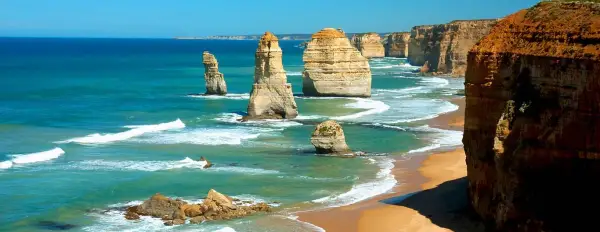Tourcode: AU1
- Overview
- Info & Inclusions
- Itinerary
- Map & Hotels
- Photos
- Dates & Prices
- Max Group Size 18
- Melbourne: City Tour
- Canberra & Sydney: City Tours
- Cairns: Great Barrier Reef Cruise
- Darwin & Kakadu National Park
- The 'Red Centre'
- Singles friendly (view options for single travellers)
- Full-time Tour Leader services and local guide support at numerous locations.
- Breakfast and dinner or lunch daily (hotels and local restaurants).
- All transport, including internal flights on which we include one checked bag per person.
- Sightseeing and entrance fees for sites noted as 'visited' in the detailed itinerary.
- Gratuities for local guides, drivers, restaurant staff, porters.
- Airport transfers for travellers who are arriving/departing on tour dates and book their air through us
- Any early arriving/late departing travellers who book both their air and extra nights through us.
- International airfare to/from the tour.
- Tour Leader gratuity, lunches, drinks, personal items (phone, laundry, etc), domestic and international air taxes (if applicable).
- Airport transfers for Land Only customers.
- Optional trip cancellation insurance.
- Seasonality and Weather:
February/March Departures (Australian Summer/Early Autumn):
February offers Australia at its warmest and most vibrant, though expect genuine heat—particularly in the Red Centre where temperatures soar. This timing is ideal for those escaping northern hemisphere winter, trading snow for sunshine. The tropical north (Cairns and Darwin) experiences the wet season with afternoon thunderstorms that refresh the landscape and fill waterfalls to their most spectacular. March begins the transition to more comfortable conditions with decreasing humidity and fewer storms, while still maintaining warm, pleasant weather. Both months provide excellent conditions for Great Barrier Reef activities with calm seas and exceptional underwater visibility.
Mid-October Departure (Australian Spring):
This timing offers excellent conditions across Australia's diverse regions. You'll experience Melbourne and Sydney during their beautiful spring season with mild, pleasant weather and blooming gardens. The tropical north enjoys the dry season with comfortable temperatures, clear skies, and calm seas—perfect for Great Barrier Reef activities. Central Australia provides ideal conditions with warm days and cool evenings, excellent for outdoor exploration and those iconic sunrise/sunset viewing experiences at Uluru. - Transport and Travel Conditions:
Road transportation throughout is via multiple a/c private motor coaches; all internal flights booked in economy class.
Our difficulty rating level "2" refers to the ambitious nature of our program, some full days of travel, some walking tours of sites that are large with uneven surfaces, and heat in some locations which could cause fatigue over time. Our internal flights also mean that you will need to be independent with your luggage; some flights may also occur at inconvenient times, ie early morning.
Please note that, when touring a large country such as Australia, we do our best to tie together the "must-see" places in a way that makes the most efficient and logical use of the transport options at our disposal in order to minimize time spent in airports and on long road journeys. That said, air schedules are always subject to change, which could result in some connections that are less-than-ideal, resulting in necessary adjustments to our standard program.
Am I suitable for this tour? Please refer to our self-assessment form - Activity Level: 2
These are particularly busy tours that feature a lot of moving around, sometimes by train and short journeys on local transport. Walking tours of towns and cities are leisurely but you should be prepared to be on your feet for several hours. Some of our cultural trips that occur at high altitude and/or require greater independence with baggage handling (at hotels, airports, train stations) also fall into this category.
To learn more about the Activity levels, please visit our tour styles page. - Accommodation:
Well-located, air-conditioned, mid-range (3-star) hotels with en suite toilet and bath throughout. Single rooms are limited and likely smaller than doubles. Porter service is usually available at hotels though you should be independent with your luggage, especially at airports. - Staff and Support:
Tour Leader, driver/s, local step-on guides in several locales. - Group Size:
Maximum 18 plus Tour Leader
- Day 1:Arrival in MelbourneToday we arrive in Melbourne, the vibrant capital of Victoria. This dynamic city boasts a rich history, a captivating cultural tapestry, and a reputation for being one of the world's most livable cities.
Melbourne's story is intertwined with the Australian gold rush of the 1850s. As prospectors flocked to the Victorian hills in search of fortune, Melbourne rapidly transformed from a sleepy settlement into a bustling metropolis. Grand buildings were erected, wide boulevards were laid, and a sense of boundless optimism permeated the air.
Today, Melbourne retains a distinct architectural heritage that reflects its golden era. Elegant Victorian-era buildings line the streets, their ornate facades showcasing the architectural styles of the time. Grand laneways, once bustling with commerce, have been transformed into trendy havens filled with cafes, bars, and street art.
Overnight in Melbourne.
Included Meal(s): Dinner, if required - Day 2:Melbourne: City TourMelbourne boasts broad and leafy streets, plenty of parks and gardens, and an air of distinction. It is the stateliest of all Australian cities. It is also a fairly recent creation, for it was only in 1835 that a Tasmanian farmer named John Batman arrived to establish a settlement here. He made a deal with local Aborigines, trading blankets, knives and tomahawks for 500,000 acres of land, and a township began to grow. A gold rush in the 1850s resulted in rapid expansion and, by 1861, Melbourne's population (then 125,000) had already overtaken Sydney's. Sydney moved ahead again in 1911 and has stayed ahead, but Melbourne has never been far behind.
Today our tour includes a trip through Melbourne's vibrant city center, exploring a number of iconic landmarks that showcase the city's rich history and cultural heritage.
Our first stop is Fitzroy Gardens, a beautifully landscaped park originally designed in the shape of the Union Jack. This tranquil oasis offers a respite from the bustling city, with its manicured lawns, ornamental ponds, and captivating sculptures. Within Fitzroy Gardens lies a hidden gem: Cook's Cottage, the family home of Captain James Cook, the renowned English navigator who explored the southern hemisphere on three epic voyages. This historic cottage was purchased in 1933, dismantled in Yorkshire, and reassembled in Melbourne as a gift to commemorate the state of Victoria's centenary in 1934.
Next, we visit the Shrine of Remembrance, a solemn monument dedicated to the Australian soldiers who served and sacrificed in World War I and subsequent conflicts. The shrine's architecture is both imposing and poignant, honoring the memory of those who fought for their country.
Our journey continues along St Kilda Road, a grand boulevard lined with historic buildings and cultural institutions. We pass by Melbourne University, a prestigious institution that has played a significant role in the city's intellectual and cultural life. Parliament House, another iconic landmark, stands as a symbol of the state's democratic governance.
For a breath of fresh air, we visit Lake Albert, a serene oasis nestled within the city. The lake offers a peaceful escape from the urban bustle, with opportunities for leisurely walks, picnics, and birdwatching.
Our final stop is St Patrick's Cathedral, a magnificent Gothic Revival cathedral that dominates the Melbourne skyline. This iconic landmark is a testament to the city's rich Catholic heritage.
Overnight in Melbourne.
Included Meal(s): Breakfast and Dinner - Day 3:Melbourne: the Great Ocean RoadToday, we we take a trip along the Great Ocean Road, one of Australia's most iconic coastal drives. Built between 1819 and 1932, this remarkable road was conceived as a world-class tourist attraction, inspired by the scenic highways of California's Pacific coast.
The Great Ocean Road serves as a memorial to those who lost their lives during World War I. As we travel along this scenic route, we are surrounded by the rugged beauty of the Victorian coastline. The stretch between Apollo Bay and Peterborough is often referred to as the "Shipwreck Coast," a testament to the treacherous waters that have claimed countless lives over the years.
One of the highlights of our journey is the opportunity to witness the dramatic rock formations known as the Twelve Apostles. These towering limestone stacks, rising 65 meters (213 feet) out of the ocean, are the remnants of a retreating coastline. The Great Ocean Road offers a multitude of scenic viewpoints, each revealing a unique perspective of the coastline. We stop at one of these famous viewpoints to capture the breathtaking beauty of the Twelve Apostles and the surrounding landscape. The rugged cliffs, the crashing waves, and the vast expanse of the ocean create a truly awe-inspiring scene.
Overnight in Melbourne.
Included Meal(s): Breakfast and Dinner - Day 4:Melbourne - Fly to Canberra: City TourThis morning we fly from Melbourne to Canberra, Australian Capital Territory. On arrival we visit the National Capital Exhibition, which displays the development of Australia's capital city; followed, appropriately, by a guided tour of the distinctly designed Parliament House.
We also drive through the embassy district, where many of the embassies reflect the architectural style of their native countries. Canberra is a uniquely Australian city which, right from its beginning, had had a very strong North American connection. The idea for a purpose-built capital came soon after the various Australian states agreed to form a federation in 1901. The creation of a new city was seen as a means of ending the rivalry between Sydney and Melbourne, and a way of giving the fledgling nation its own identity. An international design competition was conducted and, in 1913, the competition was won by a young landscape architect from Chicago named Walter Burley Griffin, who submitted his design in conjunction with his wife Marion Mahoney Griffin. Since then, Canberra has grown to become one of Australia's most distinctive cities.
Our final stop is the Australian War Memorial, the national memorial to the members of its armed forces and supporting organizations who have died or participated in wars involving the Commonwealth of Australia. The memorial includes an extensive national military museum. The Australian War Memorial was opened in 1941, and is widely regarded as one of the most significant memorials of its type in the world. Here we touch on ANZAC history and its valuable insight into Australia's development, national identity, and psyche.
Overnight in Canberra.
Included Meal(s): Breakfast and Dinner - Day 5:Canberra - Fly to Cairns - Mossman GorgeToday we fly from Canberra to Cairns, Queensland.
Queensland is huge -- at about 1 745 000 sq km (667,000 square miles) the second largest state (Western Australia is the biggest) and more than twice the size of Texas. Taking the Cape York Peninsula and the Gulf of Carpentaria into account, it has an enormous coastline over 7500 km (4,590 miles).
Queensland started out as part of New South Wales, used as a penal colony starting in 1824. An influx of free settlers, many who entered illegally, changed its face from prison to agricultural centre. In 1842 it was officially opened to free settlement and, by 1859, the population was large enough to justify its status as a separate colony. The settlers made their way with sheep, cattle, wheat, an abundance of natural resources and cash crops --including bananas, which gave rise to the rather derisive name the rest of Australia sometimes uses for Queensland natives: "Banana benders".
This afternoon we travel to Mossman Gorge and the Mossman Gorge Centre, an indigenous eco-tourism development that serves visitors to the Mossman Gorge World Heritage site.* Mossman Gorge will provide one of Australia’s most iconic Aboriginal experiences in Tropical North Queensland and is the perfect option for visitors looking for a genuine, authentic engagement with Indigenous Australia.
Our visit to the gorge includes a "Dreamtime Gorge Walk Experience," the starts with a traditional ‘smoking’ ceremony that cleanses and wards off bad spirits. The walk then meanders through stunning rainforest and takes in traditional huts or "humpies." Our interpretive indigenous guide demonstrates traditional plant use, identify bush food sources and provide an enchanting narrative of the rainforest and their special relationship with this unique tropical environment. Our guide demonstrates traditions like making bush soaps and ochre painting. At the end of the tour enjoy traditional bush tea and damper.
* Please note that air schedules may necessitate moving this activity to the day of departure from Cairns.
Overnight in Cairns.
Included Meal(s): Breakfast and Dinner - Day 6:Cairns: Reef CruiseToday, we explore and experience the Great Barrier Reef, one of the world's most iconic natural wonders. This colossal coral reef system, stretching over 2,600 kilometers and covering an area of approximately 344,400 square kilometers, is the largest coral reef system on Earth. Its immense size and ecological significance have earned it a place on UNESCO's World Heritage List.
As we cruise towards the reef, we marvel at its breathtaking beauty. The Great Barrier Reef is composed of countless individual reefs and islands, each teeming with life. This underwater paradise is home to a staggering diversity of marine species, from colorful fish and corals to sea turtles, dolphins, and even sharks.
Our vessel, designed for reef trips, is spacious and comfortable, offering ample deck space and interior seating for relaxation. A delicious buffet lunch is included, and a variety of beverages are available for purchase. To enhance our underwater exploration, snorkeling equipment is provided, allowing us to immerse ourselves in the vibrant coral reef ecosystem.
As we descend into the crystal-clear waters of the Great Barrier Reef, we are greeted by a kaleidoscope of colours and textures. Corals of every imaginable hue create a stunning underwater landscape, while schools of vibrant fish dart through the reefs. We encounter sea turtles gracefully gliding through the water, and if we are lucky, we may even spot a playful dolphin or a majestic shark.
Snorkeling in the Great Barrier Reef is an unforgettable experience, offering a unique opportunity to connect with the natural world and appreciate the delicate beauty of this fragile ecosystem.
Overnight in Cairns (dinner on your own this evening).
Included Meal(s): Breakfast and Lunch - Day 7:Cairns: Kuranda Scenic Railway & Skyrail ExperienceToday, we enjoy a day venturing into the heart of the Australian rainforest. Our adventure begins with a scenic train ride along the Kuranda Scenic Railway, winding through the dense tropical rainforest, passing the majestic Barron Falls and the picturesque Barron Gorge.
Upon arriving in Kuranda, a charming village nestled amidst the lush rainforest, we have some free time to explore its vibrant market stalls. Local artisans showcase their unique creations, offering a glimpse into the region's rich cultural heritage.
Our next adventure takes us to the sky, as we embark on the Skyrail experience. This 7.5-kilometer gondola ride soars above the pristine rainforest canopy, offering a breathtaking perspective of this ancient and diverse ecosystem. As we glide through the air, we are immersed in the sights, sounds, and smells of the rainforest.
To delve into the rich history of the world's oldest living culture, we visit the Pamagirri Aboriginal Experience at Rainforestation Nature Park. Our journey through time begins with an Aboriginal dance show, performed in a rainforest amphitheater. The rhythmic movements and powerful chants transport us back thousands of years, offering a glimpse into the traditions and spirituality of the indigenous people.
We then embark on a 30-minute Dreamtime Walk with our knowledgeable Indigenous guide. As we explore the rainforest, we learn about the deep connection between the Aboriginal people and the land, discovering the stories and legends that have been passed down through generations.
To complete our day of exploration, we enjoy a delicious lunch at Rainforestation Nature Park, savouring the flavors of local cuisine while reflecting on our unforgettable experiences. As the day draws to a close, we return to Cairns.
Return to Cairns (due to the length of our day and sizeable lunch, dinner on your own this evening).
Overnight in Cairns.
Included Meal(s): Breakfast and Lunch - Day 8:Cairns: Fly to DarwinToday we fly to Darwin, the vibrant capital city of Australia's Northern Territory.
Isolated from the other Australian states, Darwin has developed its own distinctive character. The city's multicultural heritage, influenced by Asian cultures, is evident in its vibrant food scene, bustling open-air markets, and the warm hospitality of its people. As we explore Darwin, we encounter a living connection to Australia's Aboriginal history and art heritage. The city is home to indigenous communities that have preserved their traditions and customs, offering visitors a glimpse into the rich tapestry of Australian culture.
One of Darwin's most iconic attractions is the opportunity to encounter the elusive "Dundees," local crocodile hunters who have become legendary figures in Australian folklore. These rugged individuals and their fearsome reptilian companions can be found in wildlife parks and crocodile farms.
Darwin's tropical climate, with its year-round warmth, fosters an energetic outdoor lifestyle. The city's residents embrace the laid-back and friendly atmosphere that characterizes the Northern Territory.
As we explore Darwin, we discover a city that is both old-fashioned and cosmopolitan, a place where the rugged spirit of the outback meets the vibrant energy of a modern metropolis.
Overnight in Darwin.
Included Meal(s): Breakfast and Dinner - Day 9:Darwin - Kakadu National ParkToday, we embark on a scenic drive along the Stuart and Arnhem Highways, venturing into the heart of Kakadu National Park. This vast and diverse park, a UNESCO World Heritage Site, offers a glimpse into Australia's ancient landscapes and rich cultural heritage.
Our journey takes us to Nourlangie Rock, an ancient Aboriginal living shelter that provides a fascinating window into the past. The surrounding area boasts a diverse ecosystem, featuring creeks, billabongs, sandy alluvial plains, forests, and sandstone escarpments. This rich and abundant environment has long attracted Aboriginal groups, who established temporary camps to utilize the natural resources.
As we explore Nourlangie Rock, we encounter ancient rock paintings that depict animals, insects, and people. These captivating artworks offer valuable insights into the lives and beliefs of the Aboriginal people who inhabited this region. Signs and displays provide detailed explanations of the art and the surrounding landscape, enhancing our understanding of this significant cultural site.
To delve deeper into Kakadu's cultural heritage, we visit the Warradjan Aboriginal Cultural Centre. This interactive center showcases the rich traditions and customs of the local Aboriginal communities, offering a glimpse into their way of life, their connection to the land, and their artistic expressions.
After a break for lunch, we head to Cooinda for a captivating Yellow Waters Billabong Cruise. This scenic cruise takes us through the South Alligator River floodplain, a vibrant wetland ecosystem that supports a diverse array of wildlife. As we glide through the tranquil waters, we have the opportunity to observe a variety of bird species, including waterbirds, raptors, and colourful songbirds. With a bit of luck, we may even spot a crocodile lurking in the depths of the billabong.
Overnight in Kakadu.
Included Meal(s): Breakfast and Dinner - Day 10:Kakadu Touring - Darwin: City TourAs we venture deeper into Kakadu, we reach Ubirr, a renowned Aboriginal rock art site. A short walk leads us to a stunning lookout overlooking the Nadab floodplain. The rock art at Ubirr showcases the artistic talents of the region's indigenous people, with depictions of fish, turtles, goannas, and other important food animals.
You'll have the opportunity to experience a scenic flight (optional - your Tour Leader can provide details/arrange while on tour) over Twin and Jim Jim Falls, two of Kakadu National Park's most iconic waterfalls. Soaring above these majestic waterfalls, we witness their breathtaking beauty from a bird's-eye view.
At the main gallery, we encounter a rare and fascinating artwork: a painting of the thylacine, also known as the Tasmanian tiger. This extinct marsupial, which disappeared from the mainland over two thousand years ago, is depicted with remarkable detail, providing a glimpse into the ancient ecosystem of the region.
Our exploration continues at the Wetlands Visitors Centre, where we enjoy panoramic views of the surrounding wetlands. The center offers informative exhibits and displays that shed light on the unique ecology and cultural significance of this region.
As the day progresses, we return to Darwin for a city tour. Our exploration includes Parliament House, a symbol of the Northern Territory's government and administration. We also visit Stokes Hill Wharf, a bustling waterfront area with restaurants, cafes, and shops.
The Mooring Basin, a picturesque harbour, offers a glimpse into Darwin's maritime heritage. We continue our tour to the Botanic Gardens, a serene oasis that showcases the region's diverse flora. East Point Reserve, a coastal park with stunning views of the ocean, provides a perfect spot for relaxation and recreation.
If time permits, we conclude our day with a visit to the Museum and Art Gallery of the Northern Territory. This cultural institution offers a fascinating exploration of the region's environment, history, ethnic diversity, maritime heritage, and natural history.
Overnight in Darwin.
Included Meal(s): Breakfast and Dinner - Day 11:Darwin - Fly to Alice SpringsToday, we fly to Alice Springs, the capital of Australia's Northern Territory.
As we arrive in Alice Springs, one immediately notes its distinctive character. The city's deep connection to Aboriginal culture is evident throughout the region. Many Aboriginal people work as stockmen on the vast cattle stations, preserving their traditional way of life. Remnants of their heritage can be found in the rock art, ancient sites, and cultural centers that dot the landscape. Indeed, the arid landscape of Alice Springs is a stark contrast to the lush greenery of other parts of Australia; the dry red earth, the deep blue sky, and the vast open spaces create a surreal and otherworldly atmosphere.
Alice Springs gained international recognition in 1950 with the publication of Neville Shute's famous novel, "A Town Like Alice." This captivating story, later adapted into a successful film, introduced the world to the unique charm of Alice Springs. The town's name itself is a tribute to Alice Gray, the wife of the telegraph station manager, who played a significant role in the town's early development.
As we explore Alice Springs, we discover a city that has embraced its unique identity. The blend of Aboriginal culture, outback heritage, and modern amenities provides for the quintessential Australian experience.
Overnight in Alice Springs.
Included Meal(s): Breakfast and Dinner - Day 12:Alice Springs SightseeingOur day tour of Alice Springs includes the panoramic ANZAC Hill, the Old Telegraph Station, and the Royal Flying Doctor Service HQ. "The Alice" began in 1872 as an overland telegraph station linking the north and south. Today it combines the vigour of the frontier-like environment with the convenience of modern facilities.
We also visit Alice Springs School of the Air, which has been bridging education gaps caused by remote locations and providing schooling to children at cattle stations, roadhouses, Aboriginal communities, and national parks with daily lessons via satellite broadband to children aged 4 to 13 years since 1951. The school broadcast area covers 1.3 million square kilometres including most of the Northern Territory, the northern area of South Australia, and eastern area of Western Australia.
A must see for every visitor is the Alice Springs Desert Park. In the space of just a few hours, you can discover many of the secrets of the Central Australian deserts. Hundreds of species of plants and animals found across Central Australian deserts can be seen. Our visit involves an easy walking trail through three desert habitats. Witness free-flying birds of prey in the nature theatre, see rare and endangered animals in the spectacular nocturnal house, hear the insights into the interlinking world of plants, animals and people from our local guides and enjoy a cinematic journey through four-and-a-half billion years of desert evolution during the 20 minute cinematic journey of "The Changing Heart".
Overnight in Alice Springs.
Included Meal(s): Breakfast and Dinner - Day 13:Alice Springs - Uluru (Ayers Rock)Today, we have a scenic drive through the Macdonnell Ranges, a rugged mountain range that stretches across the heart of the Australian outback. As we traverse this arid landscape, we witness the dramatic contrast between the red sandstone cliffs and the vast, open plains.
Our journey culminates at Uluru, a colossal monolith that stands as a testament to the power of nature. This iconic landmark, measuring over 300 meters (1,000 feet) in height and 5 kilometers (3 miles) in length, is a remnant of ancient mountains that have eroded over time, leaving Uluru as a solitary sentinel in the desert. In 1989, scientists made a groundbreaking discovery, revealing that Uluru, the Macdonnell Ranges, and the nearby Kata Tjuta (the Olgas) were once part of a single plateau. This geological connection further highlights the significance of this region as a natural wonder.
While British explorers had ventured through the Red Centre as early as 1844, Uluru remained relatively unknown until 1873, when it was named Ayers Rock after Sir Henry Ayers, a colonial administrator of the day.
Upon arriving at Uluru, we embark on a short walk around its base, marveling at its sheer size and the intricate patterns etched into its surface. The changing colours of Uluru, particularly at sunrise and sunset, create a mesmerizing spectacle.
As the day draws to a close, we head to the sunset viewing area, where we witness one of nature's most breathtaking displays. As the sun dips below the horizon, Uluru is bathed in a kaleidoscope of colors, casting a magical glow over the desert landscape.
Overnight near Ayers Rock.
Included Meal(s): Breakfast and Dinner - Day 14:Uluru - Fly to SydneyToday, we rise before the sun to witness a breathtaking spectacle: the fiery dawn painting the domes of Kata Tjuta (the Olgas) in a mesmerizing display of light and colour. As the darkness gives way to the first rays of dawn, we embark on a short tour around the base of these majestic rock formations.
Kata Tjuta, a collection of 36 conglomerate rock domes, stands proudly beside Uluru, forming a sacred site for the Anangu people, the traditional owners of the land. As we explore, we discover the unique geological history of Kata Tjuta, understanding how these impressive formations were shaped over millions of years. The contrasting colours of the sunrise illuminate the intricate patterns and textures etched into the domes, creating a scene of awe-inspiring beauty.
Following our sunrise adventure at Kata Tjuta, we return to Ayers Rock Airport and board a flight to Sydney, Australia's vibrant and cosmopolitan harbour city.
Upon arrival in Sydney, we begin our exploration of this iconic city that boasts a captivating blend of natural beauty, historical significance, and modern flair. It's fascinating to consider that Captain James Cook, the famed British explorer, sailed right past Sydney Harbour in 1770. While he spotted the distinctive Sydney Heads headlands, he missed the vast harbour nestled behind. It wasn't until a British fleet arrived in 1788 to establish a colony in Australia that they discovered the hidden gem of Sydney Harbour.
At some point during our visit, we'll include a visit to the Sydney Opera House, a masterpiece of modern architecture that has become a symbol of the city. We could also take a ferry ride across the harbor, offering stunning views of the iconic landmarks and the bustling waterfront. For those seeking a taste of history, The Rocks district offers a glimpse into Sydney's colonial past, with cobblestone streets, historic buildings, and charming cafes.
Overnight in Sydney.
Included Meal(s): Breakfast and Dinner - Day 15:Sydney: City TourToday's touring begins with a scenic cruise on Port Jackson, Sydney's majestic harbour. As we glide through the crystal-clear waters, we are treated to stunning views of the city's skyline, the iconic Sydney Harbour Bridge, and the pristine white sandy beaches that line the harbour. The Sydney Harbour Bridge, affectionately known as "the Coathanger," is a marvel of engineering, spanning one of the harbor's narrowest inlets. As we pass beneath this iconic landmark, we marvel at its impressive scale and architectural elegance.
Our tour takes us to Bondi Beach, a world-famous destination renowned for its golden sands, turquoise waters, and vibrant beach culture. We also explore the trendy neighborhoods of Paddington and Oxford Street, known for their boutique shops, cafes, and lively atmosphere. King's Cross, another iconic area, offers a glimpse into Sydney's nightlife and entertainment scene.
If not already visited, one of the highlights of our day is a guided tour of the Sydney Opera House, a UNESCO World Heritage Site and one of the world's most recognizable landmarks. This architectural masterpiece is a testament to Sydney's cultural vibrancy and its status as a global city. As we explore the Opera House, we are treated to a behind-the-scenes experience, gaining access to areas that are normally off-limits to the public. We run our hands over the famous shell tiles, admire the elegant custom-made white birch timber chairs, and marvel at the soaring vaulted ceilings. We explore the various theaters and foyers, imagining the performances that take place within these hallowed halls.
Overnight in Sydney.
Included Meal(s): Breakfast and Lunch - Day 16:Sydney: The Blue MountainsThis morning we embark on a westward journey by coach to the enchanting Blue Mountains. Named for the ethereal blue haze that blankets the mountain gum forests, the Blue Mountains offer a breathtaking natural spectacle.
Our first stop is the Featherdale Wildlife Centre, a haven for Australian wildlife. Here, we have the unique opportunity to encounter fascinating creatures that are elusive in the wild. From cuddly koalas and majestic kangaroos to playful wombats and curious cockatoos, the wildlife centre provides an intimate glimpse into the diverse ecosystem of Australia.
Our journey continues into the heart of the Blue Mountains National Park, a vast expanse of sandstone plateaus, forested river valleys, and deep gorges. We venture to the Wentworth Falls Reserve, where a short walk rewards us with panoramic views of the lush valley below. The towering cliffs and cascading waterfalls create a truly awe-inspiring landscape.
Next, we embark on a scenic drive along Cliff Drive, winding through the rugged terrain and offering breathtaking vistas. Our destination is the Echo Point Visitor Information Center, a hub of activity and a birdwatcher's paradise. Colourful parrots, lorikeets, and rosellas flock to the center's panoramic windows, creating a vibrant spectacle.
As we admire the stunning scenery, we can't help but notice the iconic Three Sisters formation. According to local legend, these sandstone peaks are the petrified forms of three sisters from the Katoomba tribe who were tragically cursed by a rival tribe. The legend adds a touch of mystery and intrigue to the already captivating landscape.er at the center's panoramic windows. There is a nice view here of The Three Sisters formation, in legend members of the Katoomba tribe who were unlucky in love.
After a full day we return to Sydney.
Overnight in Sydney.
Included Meal(s): Breakfast and Dinner - Day 17:DepartureDeparture from Sydney.
BON VOYAGE!
Included Meal(s): Breakfast
Countries Visited: Australia
*The red tour trail on the map does not represent the actual travel path.
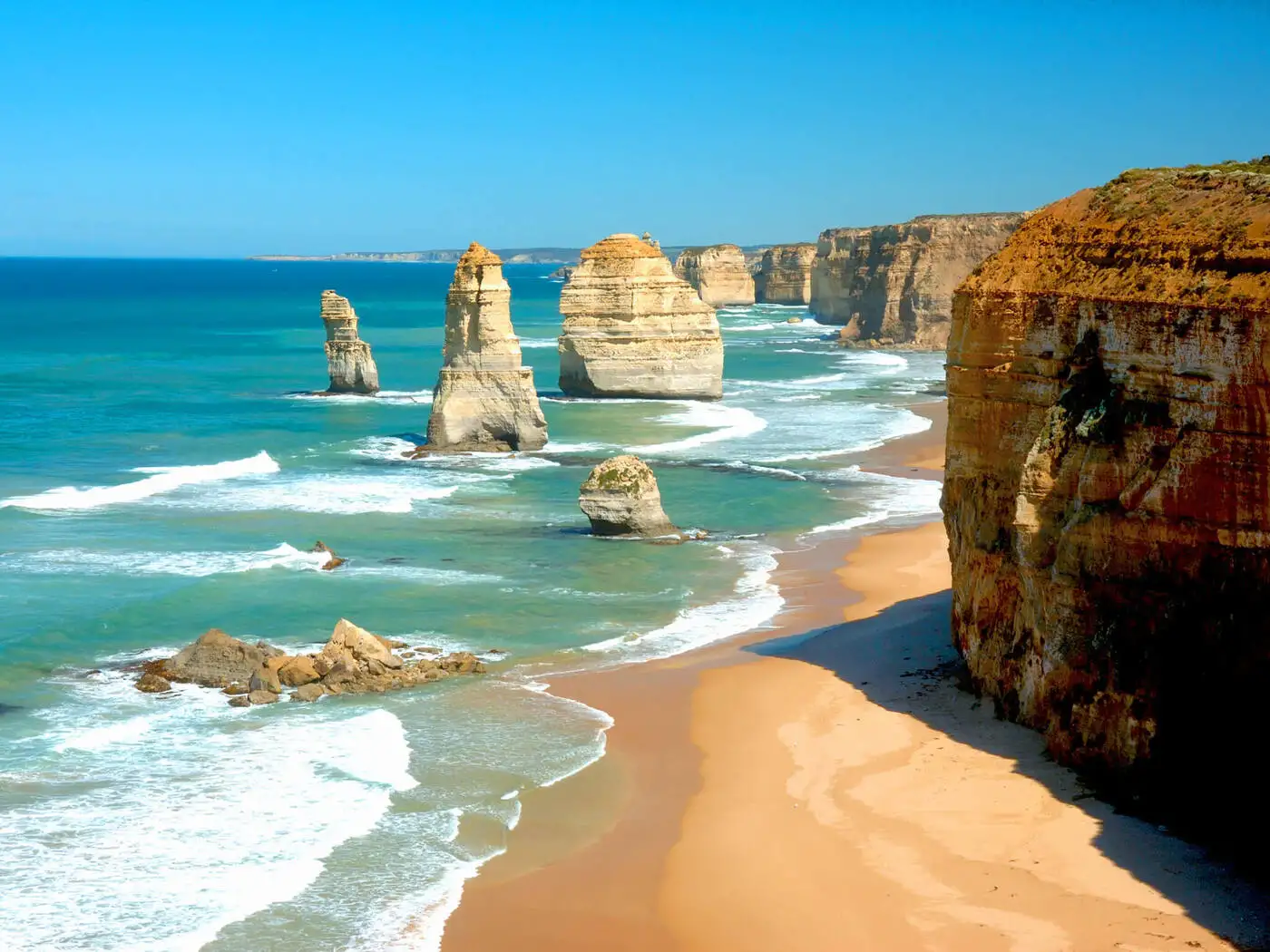
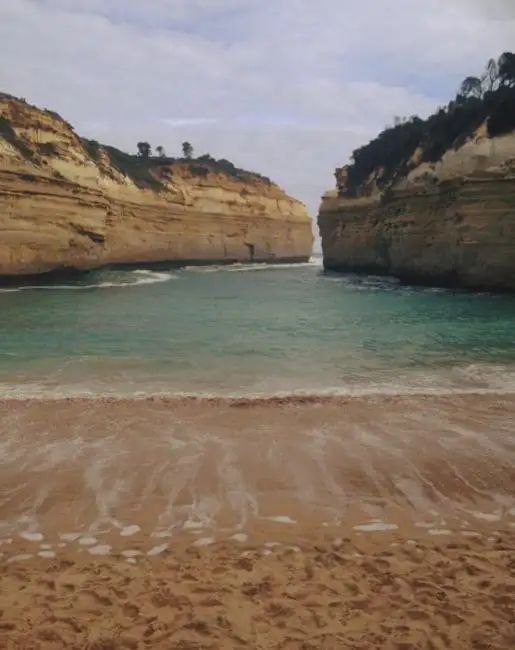
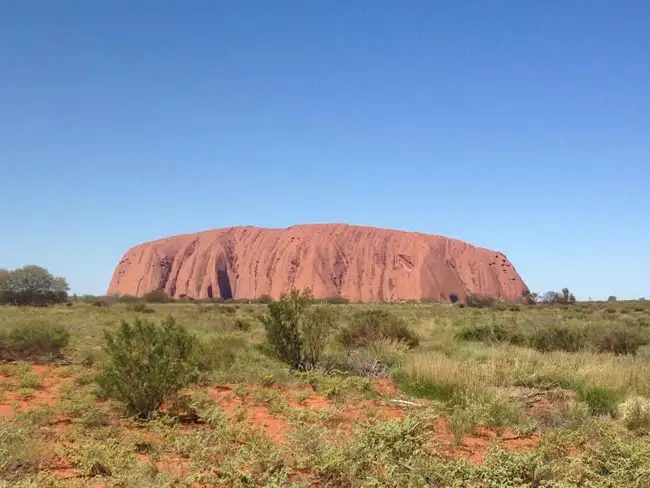
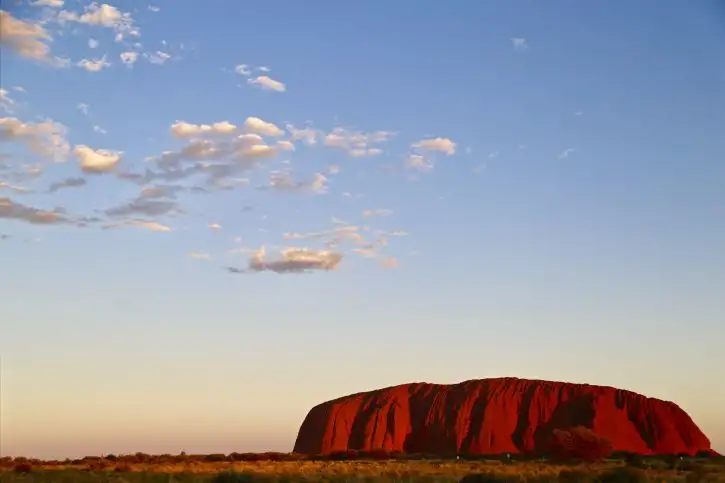
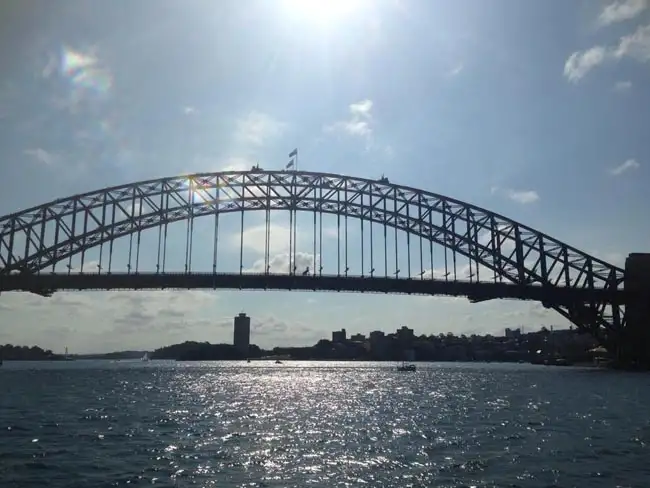
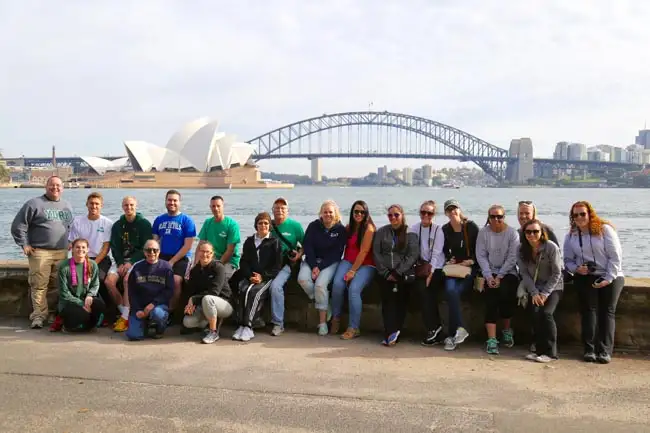
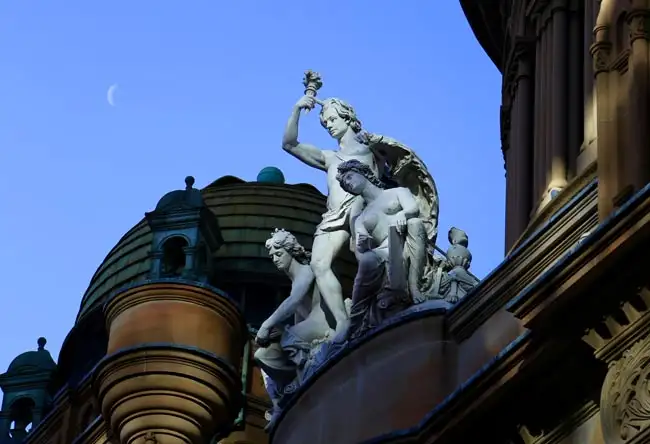
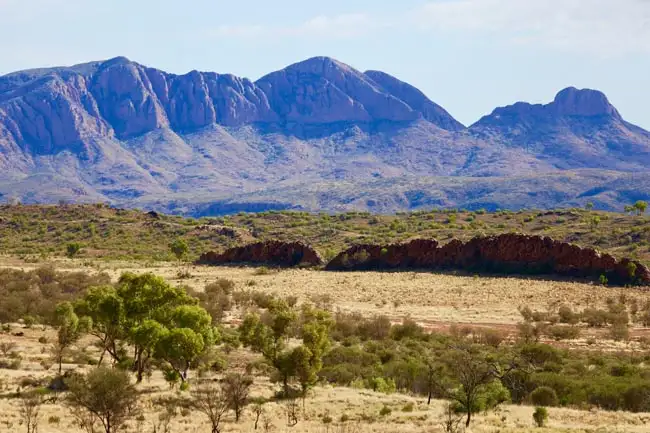
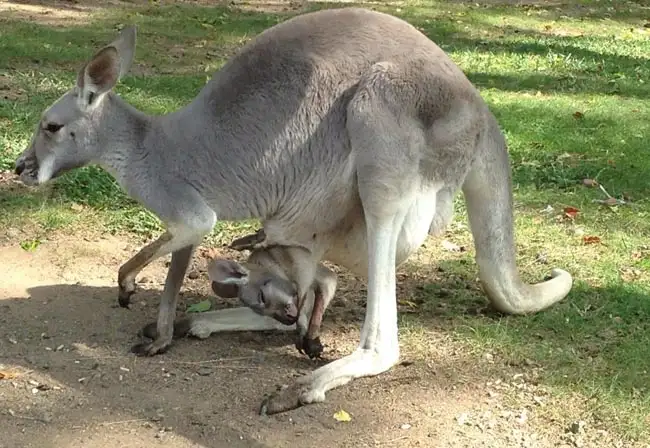
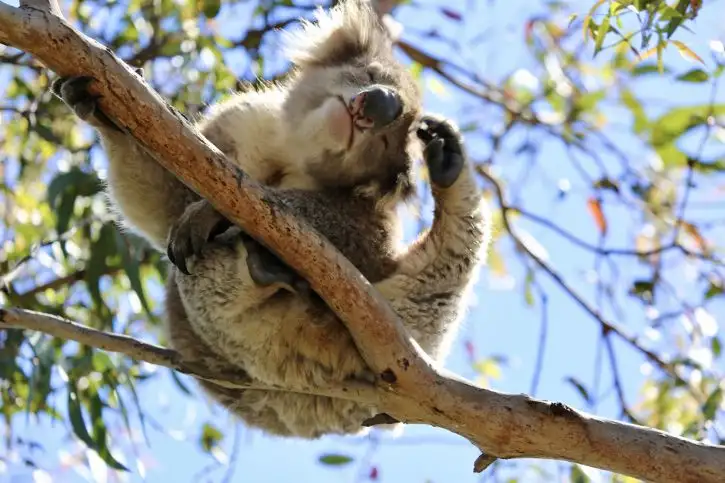
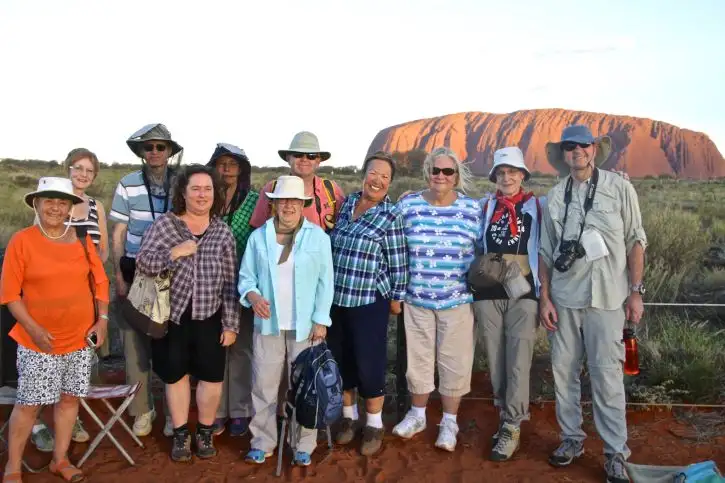
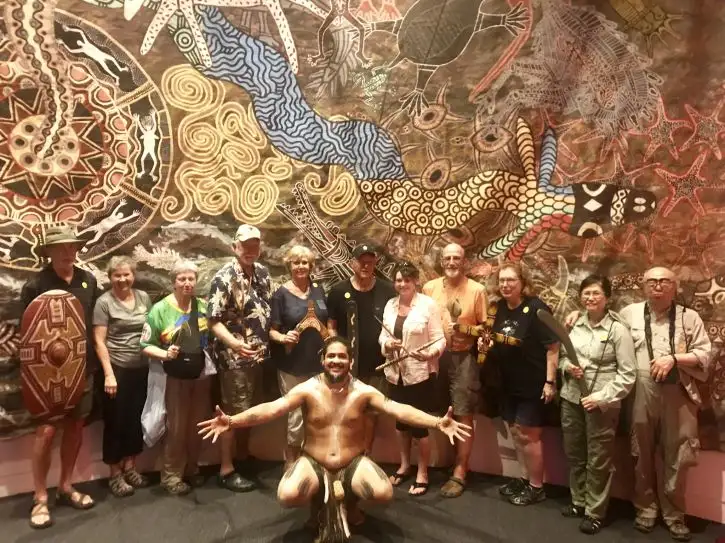
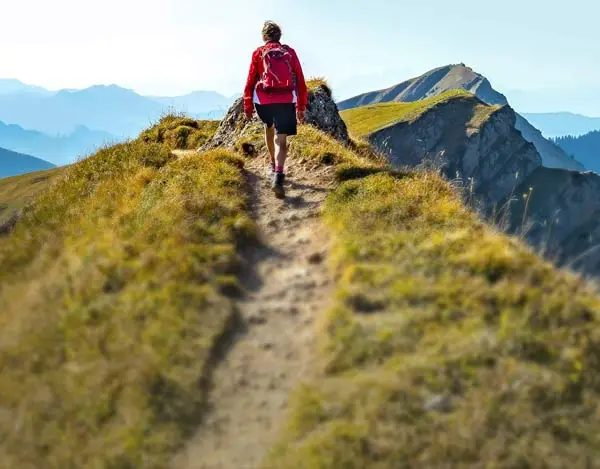
Book This Tour
- Final payment: Due 90 days prior to departure.
- Deposit: A non-refundable $1000 USD Deposit is required at booking.
- Internal Flight Taxes: An extra $441 USD applies for taxes and fees on tour flights. The internal airfares are included, but taxes are listed separately as they may change. Exceptions are noted in Red.
- Optional Single Supplement: $2240 USD (number of singles limited).
(View options forsingle travellers)
NOTE: A $1020 USD mandatory Single Supplement may apply if no pairing is available in the share program. - Transfering Tour or Date: Transferring to another tour or tour date is only permissible outside of 120 days prior to departure and is subject to a $100 USD change fee.
(Read our cancellation policy)
Prices below are per person, twin-sharing costs in US Dollars (USD). Pricing does not include airfare to/from the tour and any applicable taxes.
Tourcode: AU1
Frequently Asked Questions
- What is the maximum number of participants on a trip?Most of our tours carry a maximum of 18 participants; some tours (ie hiking tours) top out at 16. In the event that we do not achieve our minimum complement by our 90-day deadline, we may offer group members the option of paying a "small-group surcharge" as an alternative to cancellation. If all group members agree, we will confirm the trip at existing numbers; this surcharge is refundable in the event that we ultimately achieve our regular minimum. If the small group surcharge is not accepted, we will offer a refund of your deposit or a different trip of your choice.
- Can I extend my tour either at the beginning or end? What about stopovers?Yes, you can extend your tour either at the beginning or the end and we can book accommodation in our tour hotel. Stopovers are often permitted, depending on air routing. Stopovers usually carry a "stopover" fee levied by the airline.
- How do I make a reservation? How and when do I pay?The easiest way to make a reservation is via our website; during office hours, you are also more than welcome to contact us by telephone.
A non-refundable deposit is payable at the time of booking; if a reservation is made within 90 days, full payment is required. Some trips require a larger deposit. If international airline bookings require a non-refundable payment in order to secure space or the lowest available fare, we will require an increase in deposit equal to the cost of the ticket(s).
Early enrolment is always encouraged as group size is limited and some trips require greater preparation time.
Once we have received your deposit, we will confirm your space and send you a confirmation package containing your trip itinerary, any visa/travel permit related documents, invoice, clothing and equipment recommendations, general information on your destination(s), and forms for you to complete, sign and return to us. Your air e-tickets (if applicable), final hotel list, final trip itinerary, and instructions on how to join your tour, will be sent approximately 2-3 weeks prior to departure. - What about cancellations, refunds, and transfers?Please review our cancellation policy page for details.
- I am a single who prefers my own room. What is a single supplement?All of our tours have a single supplement for those who want to be guaranteed their own room at each location.
This supplement is a reflection of the fact that most hotels around the world do not discount the regular twin-share rate for a room by 50% for only one person occupying a room. Most hotels will give a break on the price, but usually in the range of 25-30% of the twin-share rate. This difference, multiplied by each night, amounts to the single supplement.
The conventional amount can also vary from country to country and some destinations are more expensive than others for single occupancy. In order to be "single friendly," the supplements we apply are not a profit centre for us and we do our best to keep them as reasonable as possible.
On most tours we limit the number of singles available, not to be punitive, but rather because many hotels allow for only a limited number of singles; some smaller hotels at remote locations also have a limited number of single rooms available.
Please note that most single rooms around the world are smaller than twin-share rooms and will likely have only one bed. - Do you have a shared accommodation program?Yes! If you are single traveller and are willing to share, we will do our best to pair you with a same-gender roommate. On most of our tours, if we fail to pair you, we will absorb the single supplement fee and you will default to a single room at no extra charge. At some destinations, however, where single rooms are not significantly discounted, or not at all, we may apply a "mandatory" single in the event that we cannot find you a share partner. This is usually 50% of the usual supplement, but can be as much as 100%. If applicable, this proviso will be noted on each tour page on this website, on your invoice, and in our tour date/price book (available for download under "Resources").
